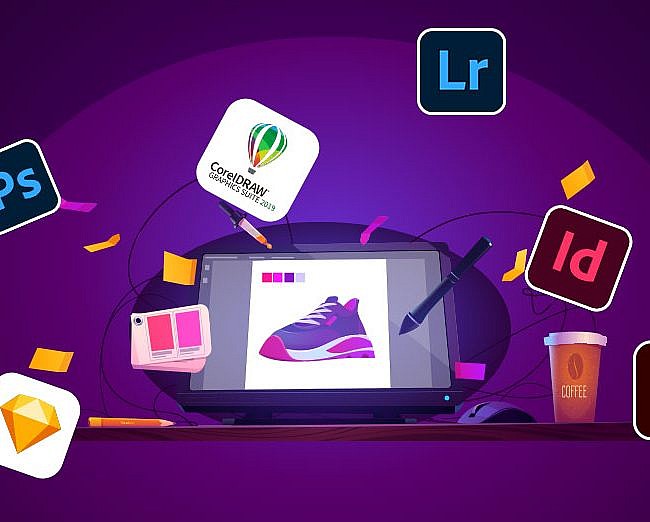There was once a time when graphic design tools were limited to paint brushes, paints, wood carving tools, charcoal and the like. The times have changed, though, and today’s graphic designers have access to far more than hand-tools and physical painting or coloring options.
The History of Graphic Design
Graphic design goes back an incredibly long time. The very first time human beings put a tool to stone or shell to create art, graphic design was born. Rock art, cave drawings, petroglyphs – all of these are part of the history of graphic design. It has remained with us, an integral part of what it means to be human, since then.
Of course, graphic design has changed over time, thanks in large part to the evolution of new graphic design tools and techniques. Actually, a great deal of what we create today is not that different from what our ancestors painted on the walls of caves. Only our tools and techniques have improved. We’re still imparting messages through the creation of visual material.
Graphic Design Tools – The 5 Top Options
When it comes to tools, graphic designers and graphic design companies today have far more options than at any other point in history. Below, you’ll find five necessary tools for designers and design firms.
Adobe Creative Cloud
Adobe has been a mainstay in the world of graphic design since Photoshop first hit the scene. It remains the most popular option today as well, even though the company has changed things up a bit. Adobe has moved from a piecemeal selection of different programs to the Creative Cloud platform. This includes everything from Photoshop to Flash to Dreamweaver and more. The price varies depending on your subscription plan and whether you’re buying as an organization or an individual. However, there’s no charge for future upgrades.
Pantone Color Guides
Color is a huge consideration for graphic designers in all areas of the industry. With the complete integration of technology into your professional life, you’re bound to encounter mismatched colors that show up differently in real life and on the computer. Pantone color guides will help ensure you’re always accurate. Prices vary depending on where you get your guides and which guides you need most, but expect to pay at least $50 (some run into the hundreds of dollars).
Sketchbooks
As a graphic designer, you’re going to do a lot of work by hand, even if that work ultimately ends up on the computer. You will need sketchbooks, and you’ll need several different sizes to accommodate your needs. Prices vary drastically by size, type, brand and paper weight.
Productivity Suite
While most of your work will likely be done directly in Photoshop or a similar program, you’ll need access to other software, including word processors, spreadsheets and other graphic design tools. Microsoft Office and Apple iWorks are the two main contenders here.
USB Drive
You’ll need to carry your creative work with you a great deal, and that’s easiest to do in electronic format. Invest in a decent USB drive. A 32 GB drive offers decent storage, but you can buy them all the way up to 128 GB and more. Price varies from brand to brand and retailer to retailer, but you can generally find a 32 GB drive for about $30.
– Artwork Abode
Artwork Abode



